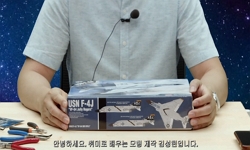A scientific analysis using metallographic microscopy and SEM-EDS was conducted on the bronze spoon, slag, iron sickle, and iron plate excavated from the Chilwon-dong site in Pyeongtaek to study the manufacturing characteristics of the artifacts. The ...
http://chineseinput.net/에서 pinyin(병음)방식으로 중국어를 변환할 수 있습니다.
변환된 중국어를 복사하여 사용하시면 됩니다.
- 中文 을 입력하시려면 zhongwen을 입력하시고 space를누르시면됩니다.
- 北京 을 입력하시려면 beijing을 입력하시고 space를 누르시면 됩니다.
평택 칠원동 유적 출토 금속유물 및 슬래그의 과학적 분석 = Scientific Analysis of Metal Artifacts and Slag Excavated from the Chilwon-dong Site in Pyeongtaek
한글로보기https://www.riss.kr/link?id=A109536173
- 저자
- 발행기관
- 학술지명
- 권호사항
-
발행연도
2024
-
작성언어
-
-
주제어
청동숟가락 ; 슬래그 ; 철겸 ; 철편 ; 과학적 분석 ; 제작 특성 ; Bronze Spoon ; Slag ; Iron Sickle ; Iron Plate ; Scientific analysis ; Manufacturing method
-
KDC
900
-
자료형태
학술저널
-
수록면
21-28(8쪽)
- 제공처
-
0
상세조회 -
0
다운로드
부가정보
다국어 초록 (Multilingual Abstract)
A scientific analysis using metallographic microscopy and SEM-EDS was conducted on the bronze spoon, slag, iron sickle, and iron plate excavated from the Chilwon-dong site in Pyeongtaek to study the manufacturing characteristics of the artifacts. The bronze spoon exhibited needle-shaped martensite, twinning, and strain lines within the α-phase, confirming that it is a hammered bronze spoon produced through high-temperature forging and quenching after casting. In the case of slag, fayalite, wüstite, and reduced Fe particles were identified in the microstructure, indicating that it is a byproduct of the iron smelting process. The iron sickle and iron plate were found to be hypoeutectoid steel materials with a microstructure of ferrite and pearlite coexisting. Notably, the iron sickle displayed elongated non-metallic inclusions, suggesting that it was manufactured through repeated forge welding and forging processes. Furthermore, wüstite with a high FeO content was observed within the non-metallic inclusions of the iron artifacts, demonstrating that wrought iron produced by the direct reduction method was utilized.
동일학술지(권/호) 다른 논문
-
문화유산 기록화를 위한 3차원 스캔데이터 손실 영역의 형상보완 모델링 방법론 제안
- 공주대학교 문화재보존과학연구소
- 성은희 ( Eun Hee Soung )
- 2024
-
국내 청화백자의 과학적 특징과 비파괴 조성 분석 가능성 연구
- 공주대학교 문화재보존과학연구소
- 김강 ( Gang Kim )
- 2024
-
<인촌 김성수선생 동상> 표면 오염물의 재료과학적 분석 및 보존처리 연구
- 공주대학교 문화재보존과학연구소
- 조성모 ( Sungmo Cho )
- 2024
-
- 공주대학교 문화재보존과학연구소
- 신지수 ( Jisu Shin )
- 2024




 KISS
KISS






